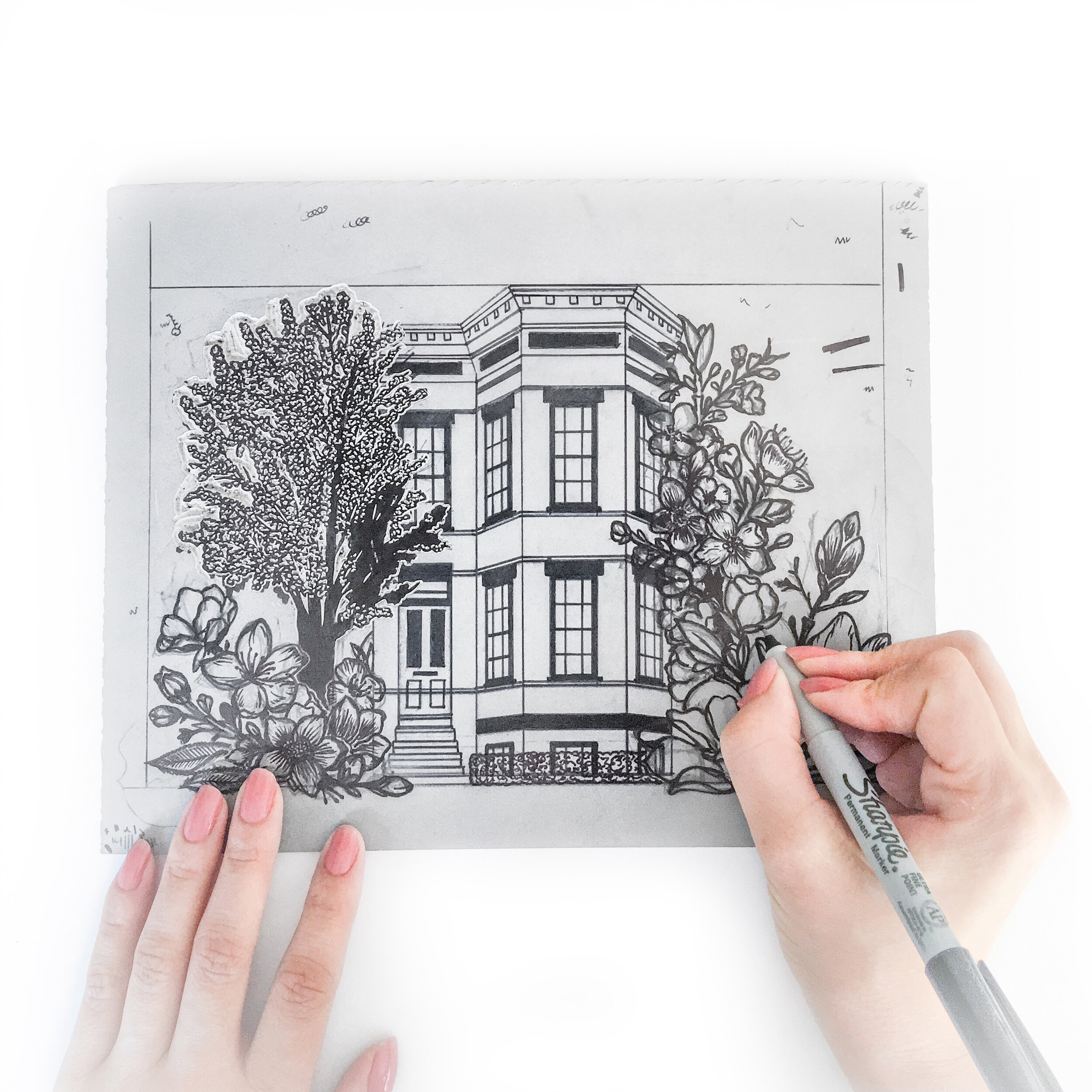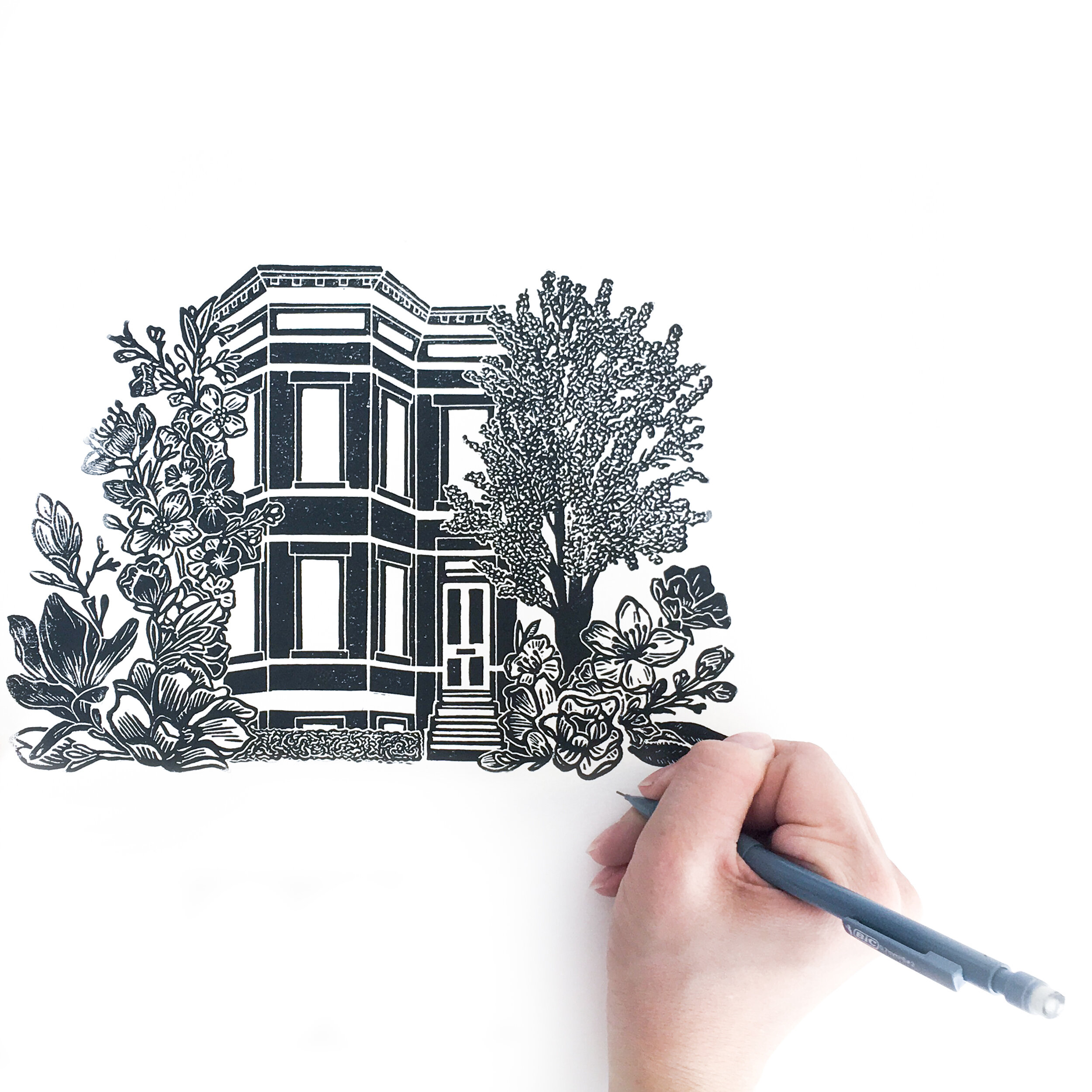Understanding Linoleum Block Printing
In the simplest terms, printmaking involves inking a block surface with a design on it and then pressing the block into paper, leaving behind the inky design. In block, or relief printing, the image is raised from the surface, an effect achieved by carving away the parts of the material that should not be printed as part of the design. The part left after carving will be the surface the ink prints to the paper.
The carving material can vary and often includes different types of linoleum or wood. I prefer using an 1/8th- inch thick linoleum. It’s flexible enough to carve easily and allow for detail, but strong enough to be repeatedly inked and pressed for multiple editions.
The steps are relatively simple and shown below. The design is first drawn onto the block. Next all the white space is carved away. The block is then inked-up and pressed into paper. The ink can be transferred to the paper either by hand burnishing with a baren (a design tool with a curved dish and handle) or a spoon, or by running through the small etching press (I have used all three methods). After the prints have dried they are signed and numbered.
Draw
Carve
Sign
Frequently asked questions
What are deckled vs. straight edges?
Deckled edges are raw or unfinished edges on a piece of paper. They can either be torn to achieve this look or created naturally in the process of paper-making. They look feathered and jagged and add a little more character to each print, even though they may lack the perfection of a straight edge.
I sell most of my prints with the option of either straight or deckled edges. The deckled edge pages are slightly larger than the measured size and vary by print.
What are the numbers on every print? And what is an edition?
In addition to the artist’s signature, there is a set of numbers at the bottom of each print. These numbers may look like a fraction, but in fact track the edition number. The bottom number is the edition total—the number of identical prints in the series. The top number is the number assigned to that individual print. All prints in an edition are numbered as a guarantee that they are all from the same limited-edition batch and each printed the same exact way.
My prints are all “limited edition” prints because there is a finite number printed and there won’t be more added to that edition total. There are no other copies of the print that exist beyond the written edition total.






